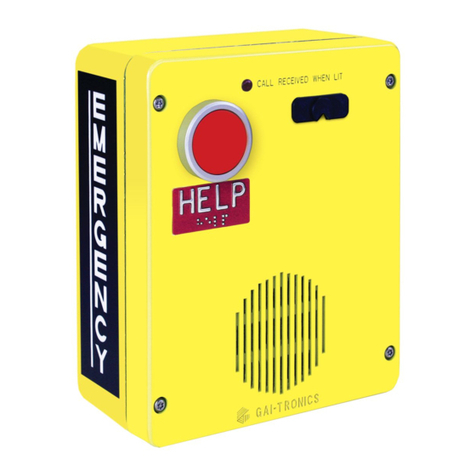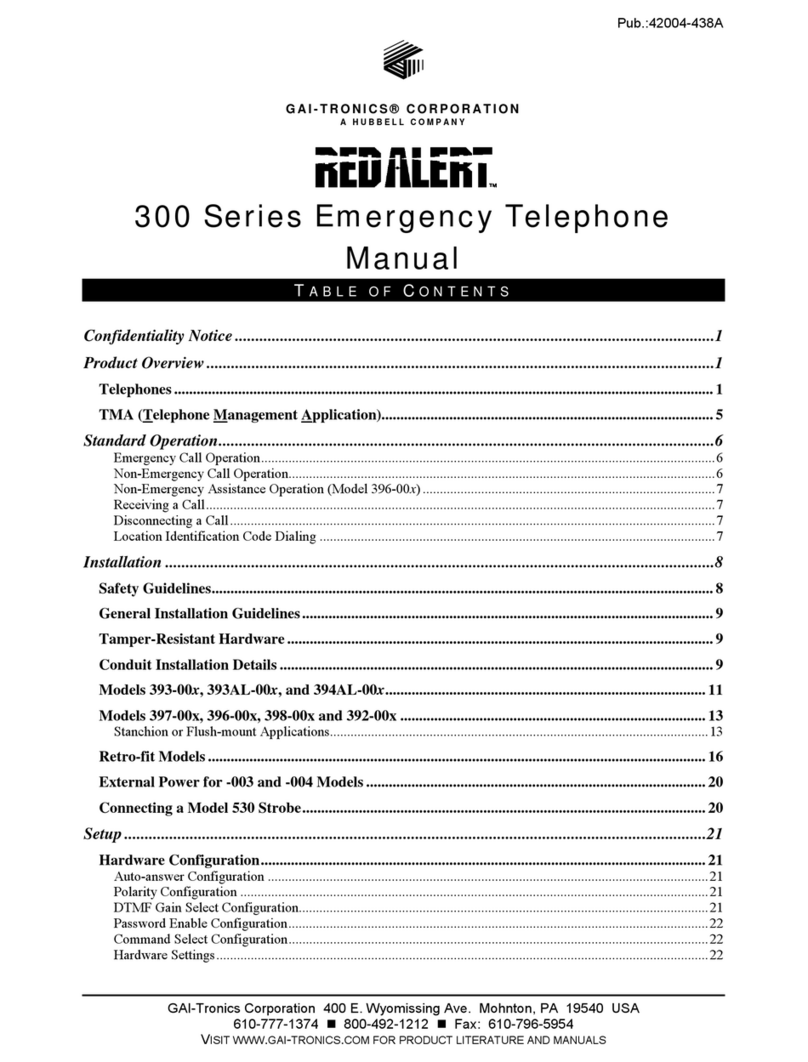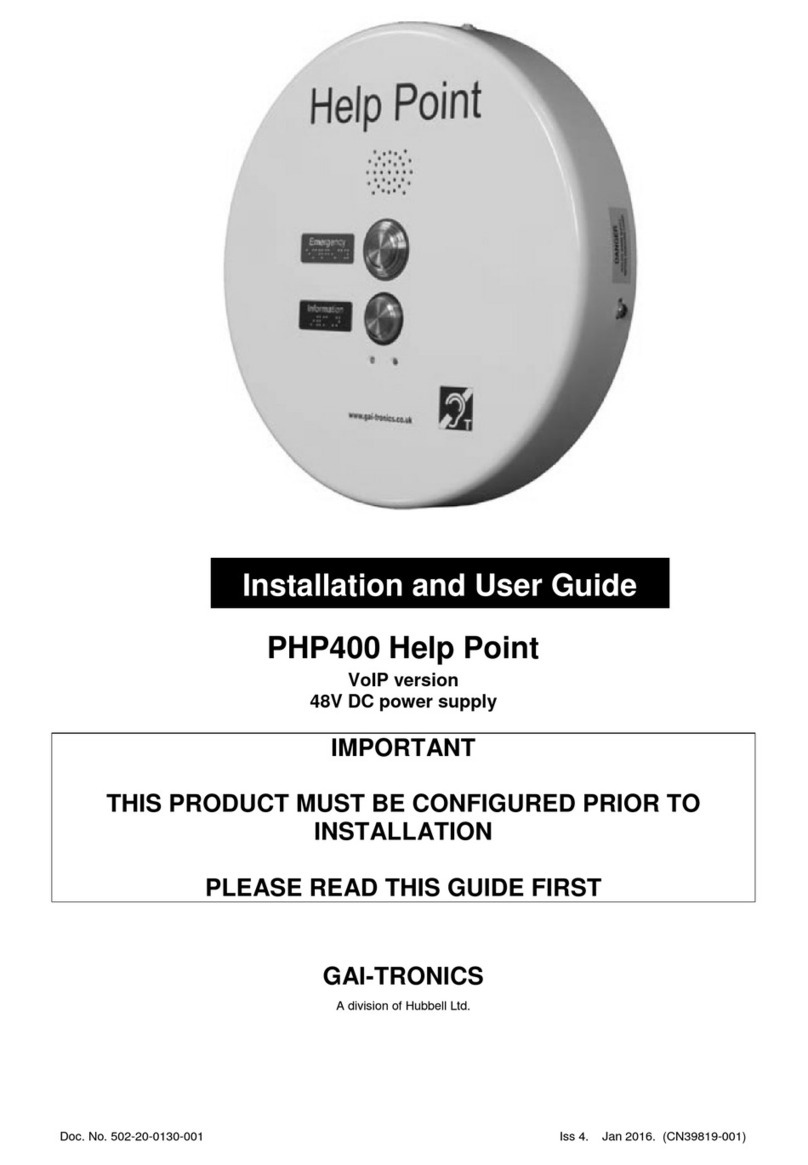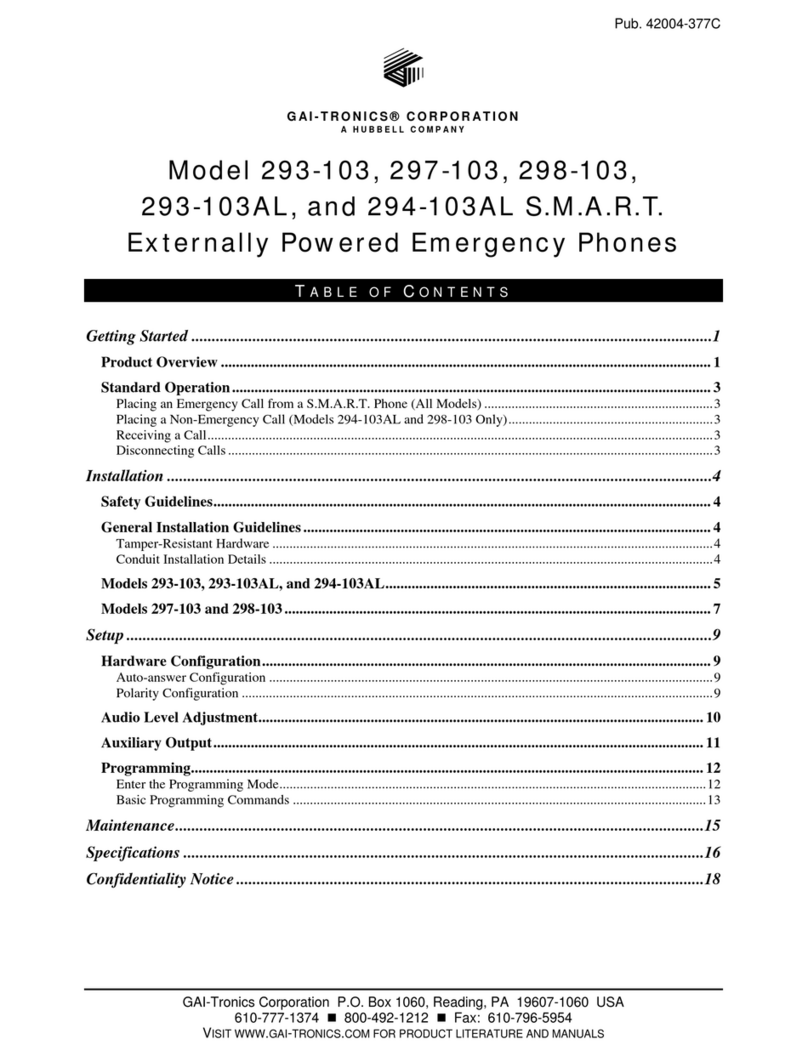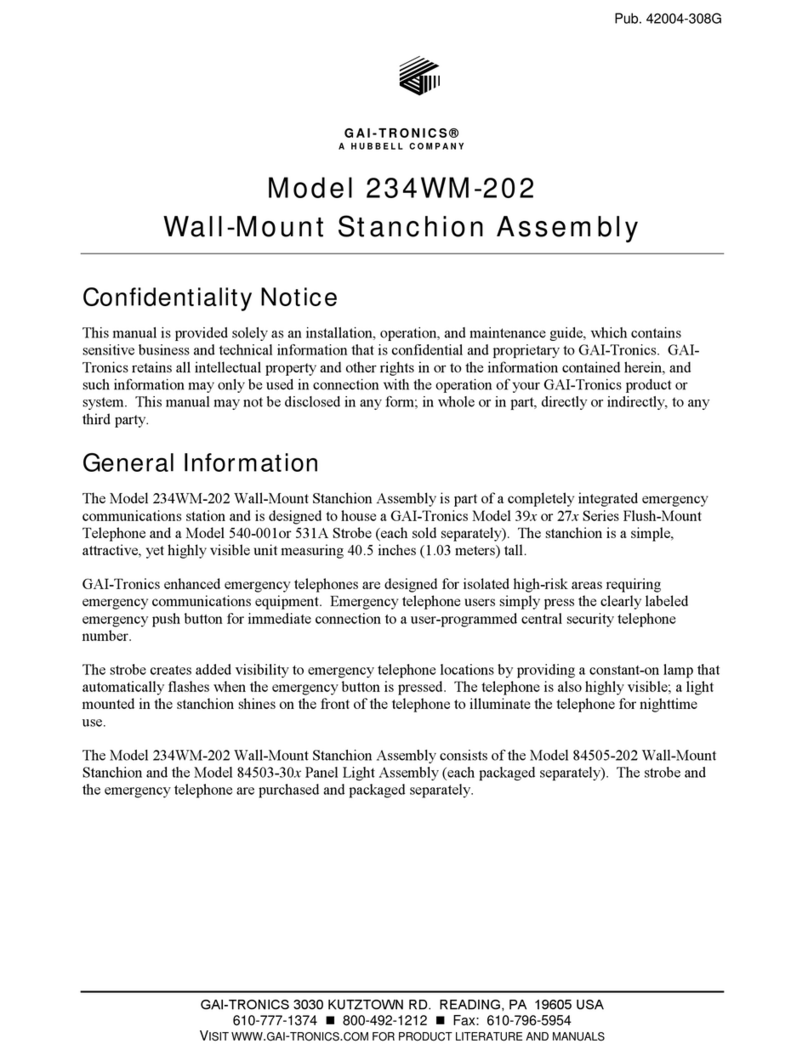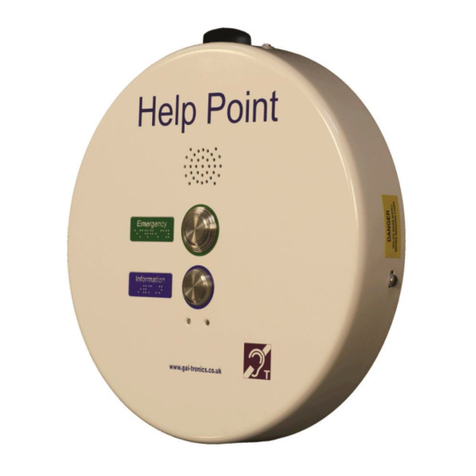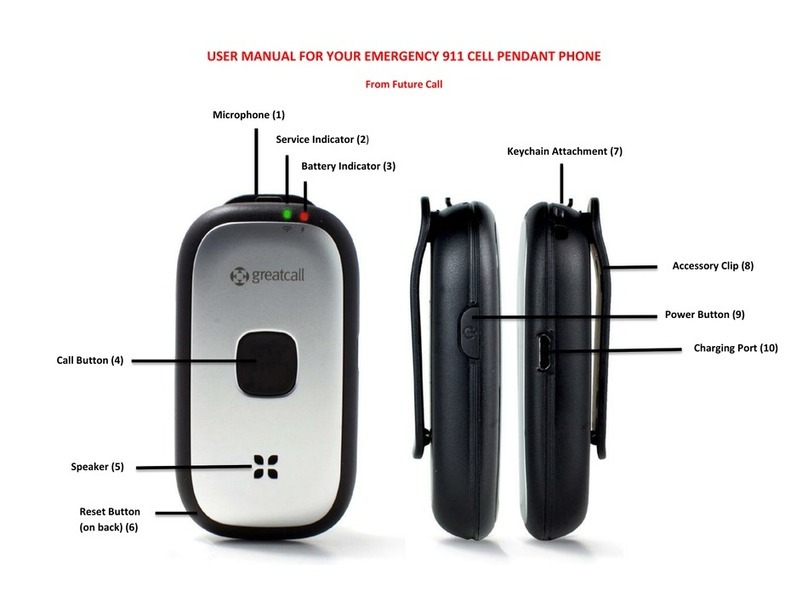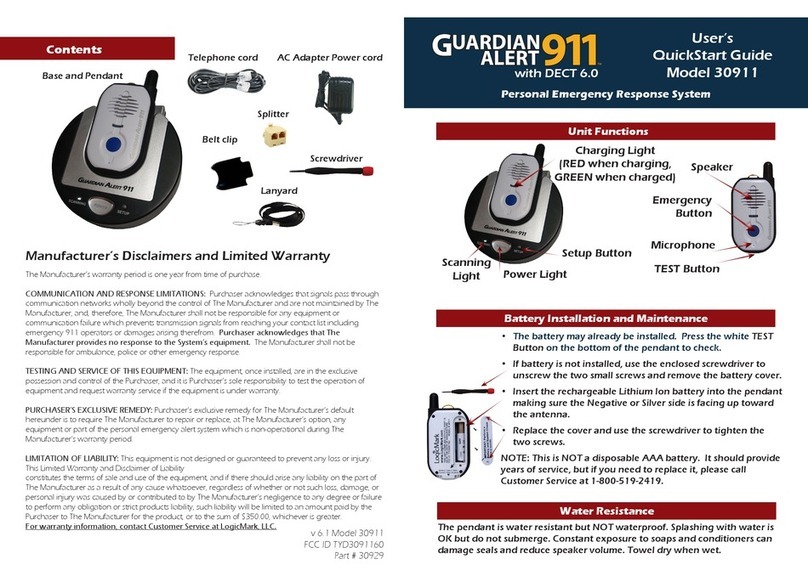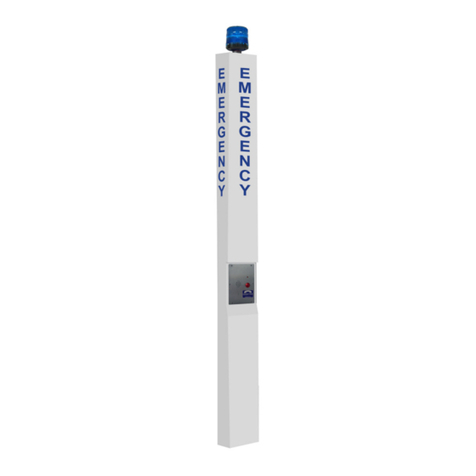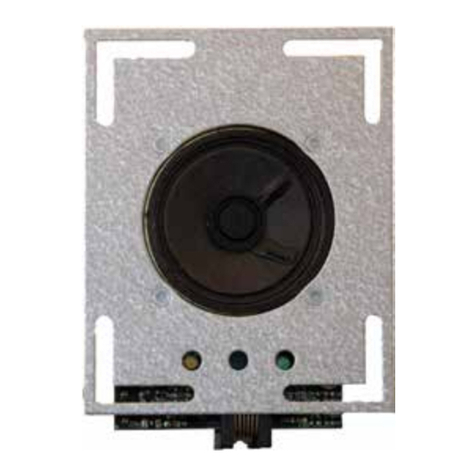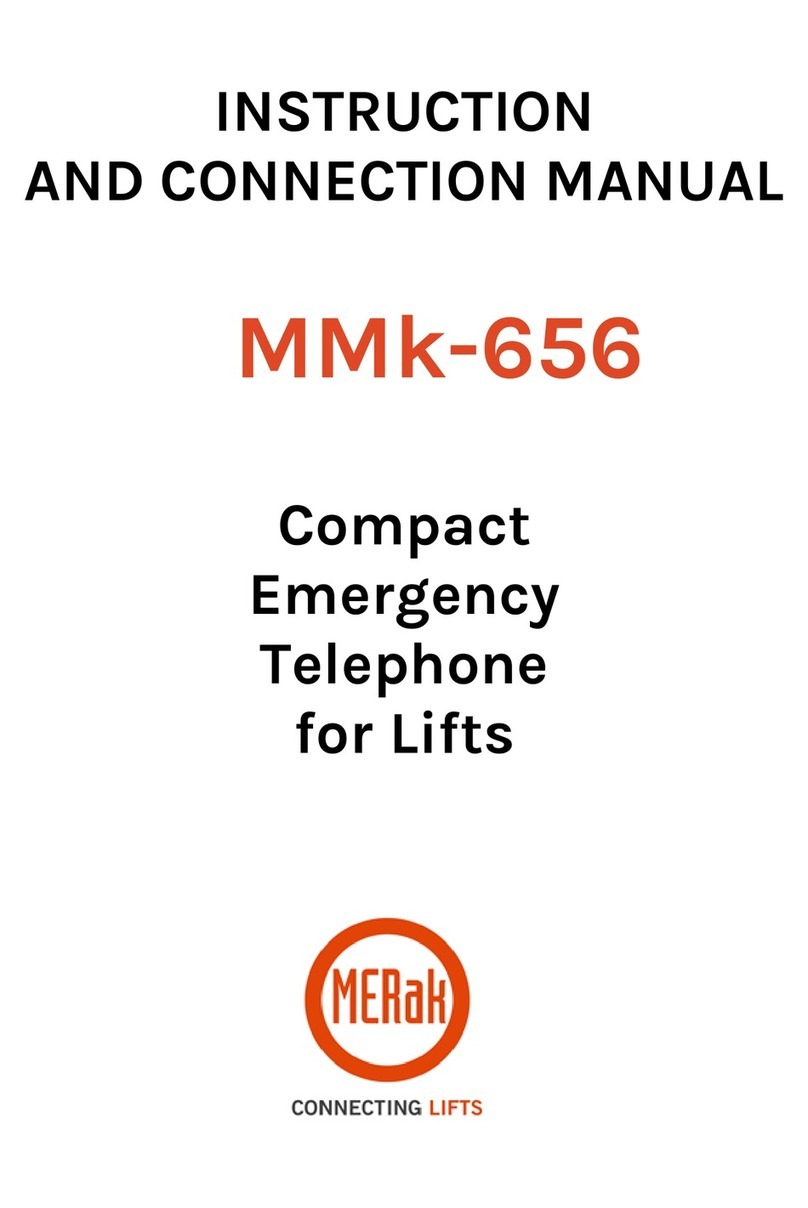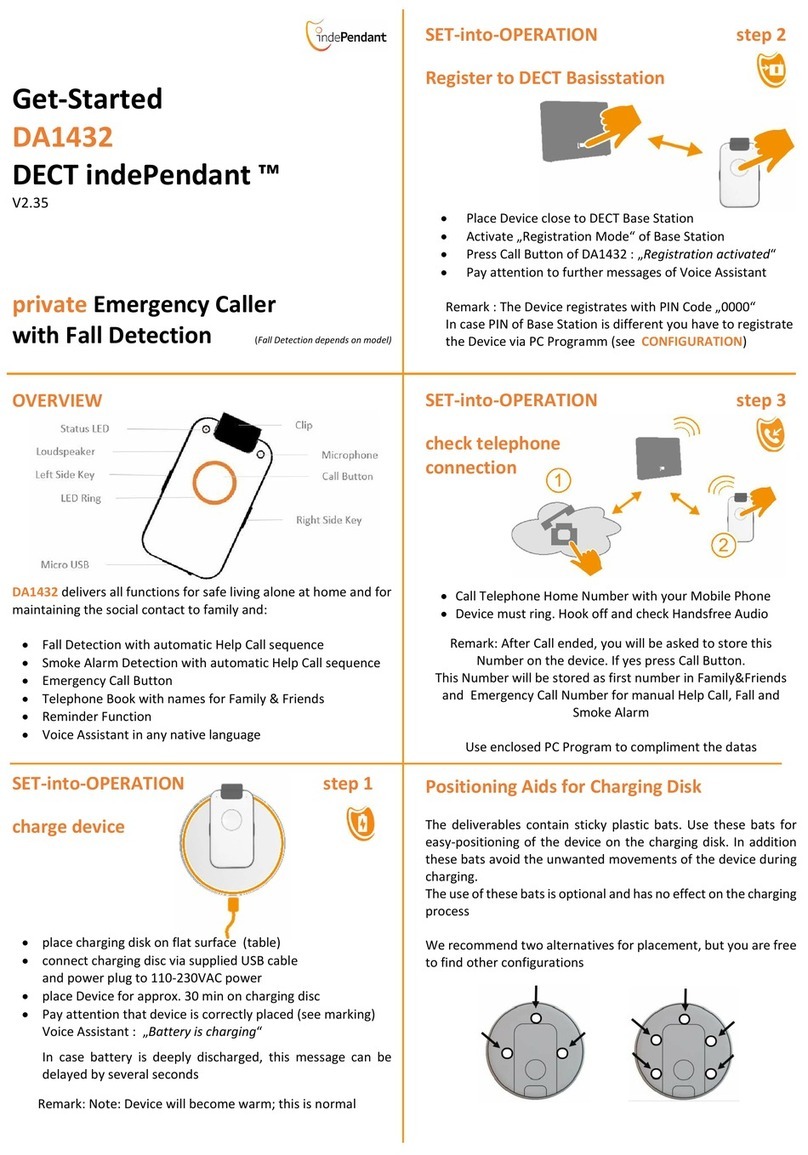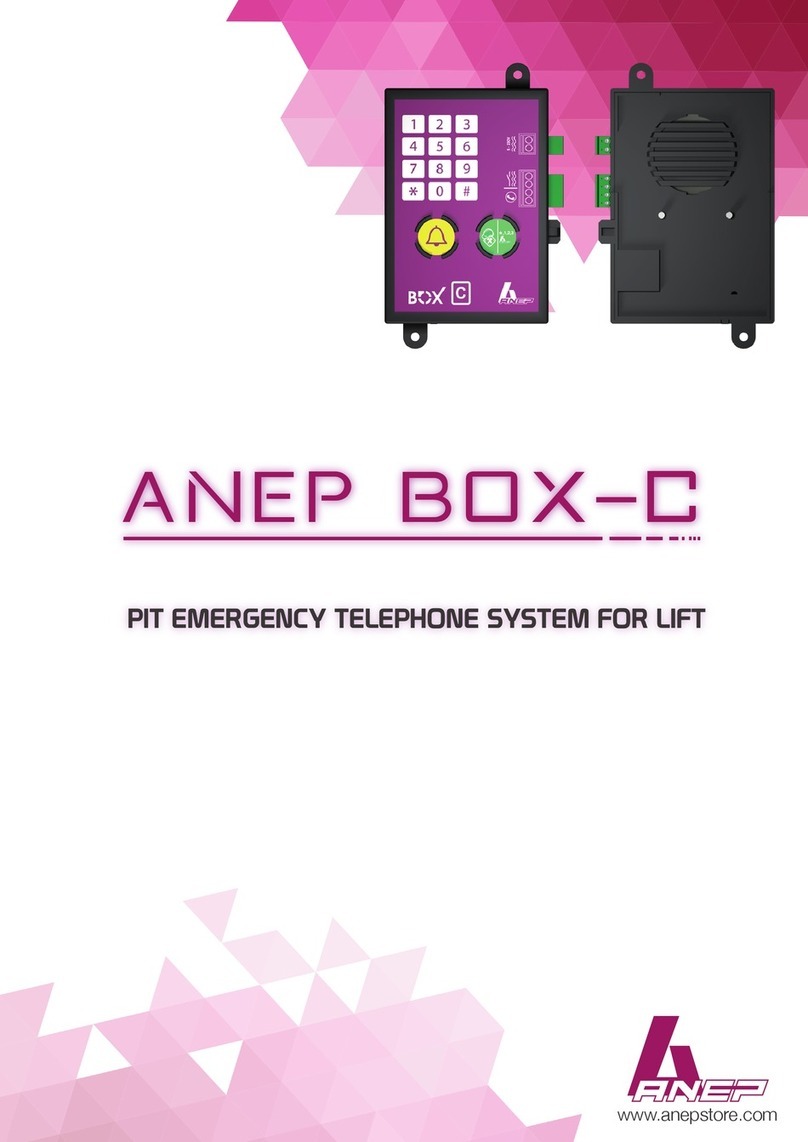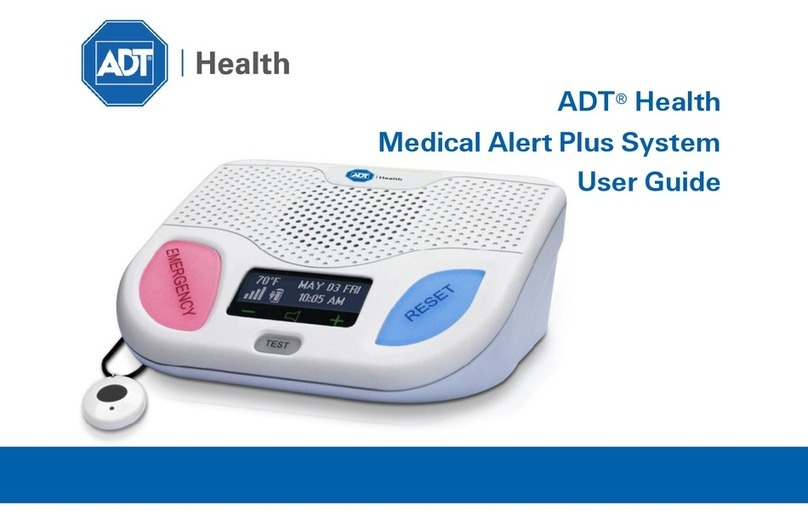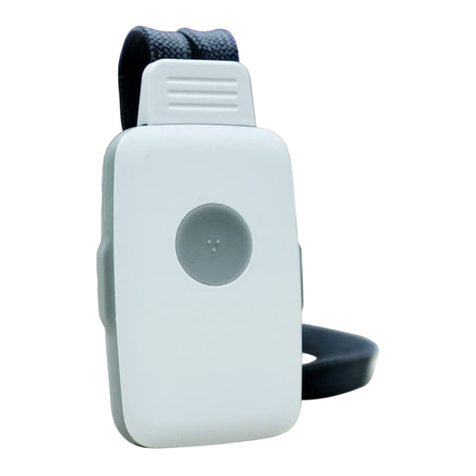
Pub. 42004-441H
GAI-TRONICS 3030 KUTZTOWN RD. READING, PA 19605 USA
610-777-1374 800-492-1212 Fax: 610-796-5954
VISIT WWW.GAI-TRONICS.COMFOR PRODUCTLITERATUREAND MANUALS
GAI - TR ON ICS ®
A H U B B E L L C O M P A N Y
Hands-free VoIP Telephone Manual
TA B L E O F CO N T E N T S
Confidentiality Notice.....................................................................................................................1
Product Overview............................................................................................................................1
SystemRequirements and Limitations..........................................................................................2
Tips for VoIP Subscribers.............................................................................................................3
Features and Functions.................................................................................................................3
Operation.........................................................................................................................................3
Placing an Auto-dial Emergency Call............................................................................................3
Placing an Auto-dial Non-Emergency Call....................................................................................4
Placing a General Telephone Call.................................................................................................4
Receiving a Call ............................................................................................................................4
Multicast Broadcast......................................................................................................................4
Monitoring and Reporting ............................................................................................................5
Installation......................................................................................................................................5
General Information.....................................................................................................................5
Safety Guidelines ..........................................................................................................................6
Station Placement.........................................................................................................................6
Security Hardware........................................................................................................................6
Conduit Installation Details (Surface-Mount Models)...................................................................7
Models 393-700, 393AL-700, and 394AL-702 (Surface Mount Applications).................................8
Models 397-70xand 398-70x(Stanchion/Flush-Mount Applications)..........................................10
Models 397-70xFS and 398-701FS (Flush-Mount Applications)..................................................15
Setup..............................................................................................................................................18
FieldWiring................................................................................................................................18
Power......................................................................................................................................................................................18
Network .................................................................................................................................................................................18
I/O...........................................................................................................................................................................................20
Recommended Cabling ....................................................................................................................................................... 20
VoIP Telephone Input Contacts..................................................................................................21
VoIP Telephone Output Contacts ...............................................................................................21
